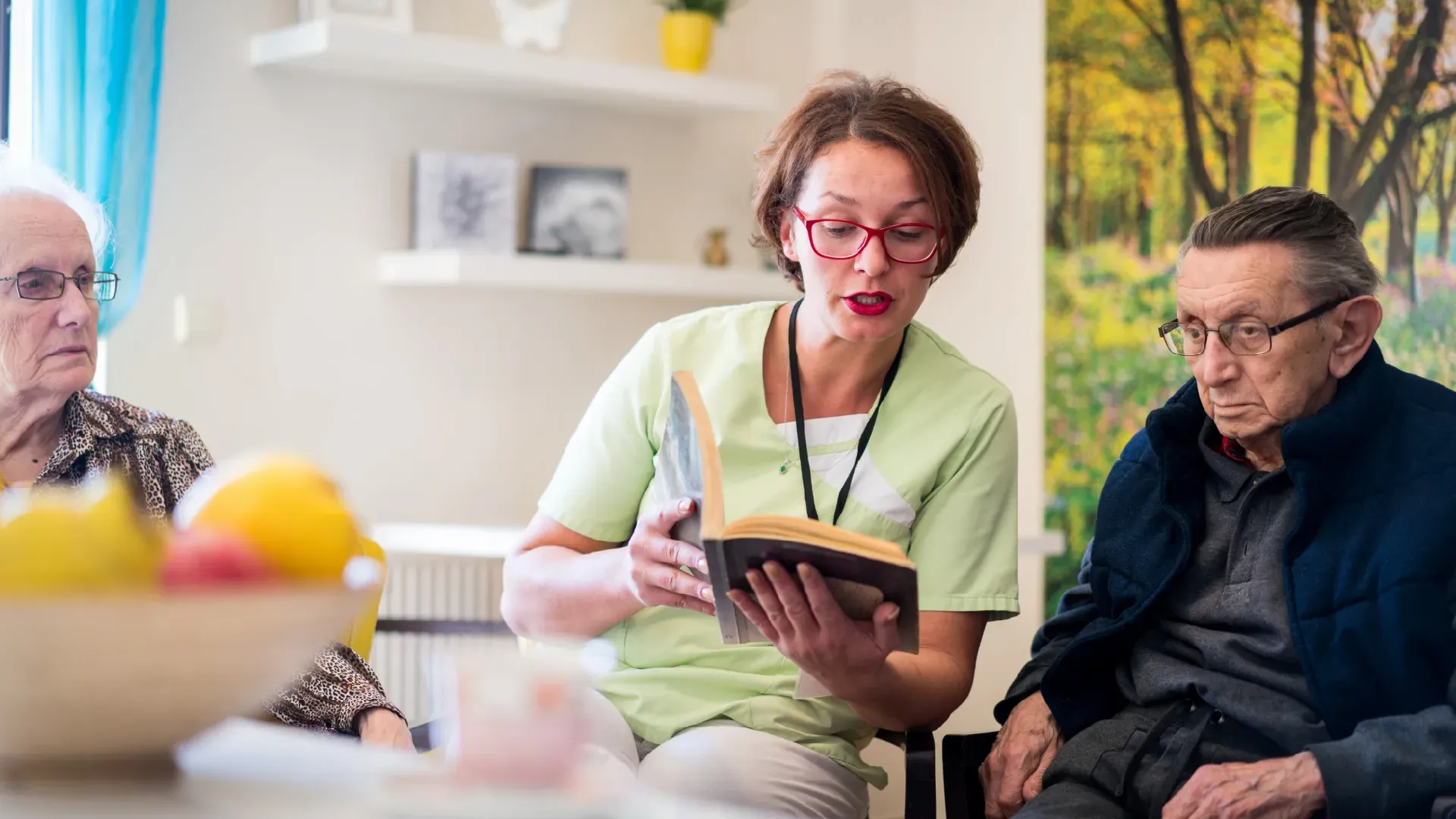The Importance of Optimal Care for Elderly Patients in Hospital Settings
The care of elderly patients in hospital settings is a critical aspect of modern healthcare systems. As the global population ages, hospitals face increasing challenges in providing optimal care for older adults, who often have complex medical needs and are more vulnerable to adverse events during hospitalisation. Ensuring high-quality care for the elderly is not just a matter of medical treatment, but also involves creating supportive environments that cater to their unique physical, cognitive, and emotional requirements.
This article explores the various elements that contribute to optimal care for elderly patients in hospitals. It examines the impact of hospitalisation on older adults and discusses strategies to create age-friendly hospital environments. The piece also delves into specialised geriatric care units, managing cognitive impairment, pain management, nutrition and hydration care, medication safety, and the importance of effective discharge planning. By addressing these crucial aspects, healthcare providers can enhance the quality of care and outcomes for elderly patients in hospital settings.
The Impact of Hospitalisation on Elderly Patients
Hospitalisation can be particularly challenging for elderly patients, often leading to various adverse effects on their physical, mental, and social well-being. As the population ages, it is crucial to understand these impacts to provide optimal care for older adults in hospital settings.
Risks of functional decline
Functional decline is a significant concern for elderly patients during hospitalisation. It refers to the inability to perform usual activities of daily living due to weakness, reduced muscle strength, and decreased exercise capacity. This decline can occur rapidly, with studies showing that deconditioning and functional decline from baseline can happen as early as day two of hospitalisation.
The hazards of bed rest during hospitalisation are well-established and include:
- Immobility
- Accelerated bone loss
- Dehydration
- Malnutrition
- Delirium
- Sensory deprivation
- Isolation
- Sheering forces on the skin
- Incontinence
Research indicates that almost half of adults who are hospitalised are 65 years of age or older, despite representing only 12.5 percent of the U.S. population. This proportion is expected to increase as the population ages. Chronic illnesses and comorbidities, such as heart disease, hypertension, arthritis, diabetes, and cancer, can directly impact functional status in the elderly.
Preadmission health and functional status can indicate the risk of further functional decline during hospitalisation. For instance, the use of a walker was associated with a 2.8 times increased risk for decline in activities of daily living (ADL) function by the time of hospital discharge. Additionally, impairment in cognitive status was found to be associated with changes in functional status in hospitalised elderly patients.
Psychological effects of hospitalisation
Hospitalisation can have significant psychological impacts on elderly patients. The stress and isolation that comes from a new setting and a change in familiarity can have long-term effects, making it harder to recover after the stay. Elderly patients are more susceptible to feelings of confusion, disorientation, and agitation while hospitalised, which can lead to delirium, a leading cause of cognitive decline for seniors.
The National Institute of Health (NIH) has found that hospitalisation has been identified as a potential risk factor for anxiety or depression in elderly patients. In many cases, these psychological symptoms related to hospitalisation did not subside at discharge.
Lack of mental stimulation during a hospital stay can also contribute to mental decline in elderly patients. The isolation from family or friends can negatively impact their long-term cognitive function. It is crucial to keep elderly patients mentally stimulated throughout the duration of their stay to mitigate these effects.
Social implications
Social relationships play a significant role in the hospitalisation experience of elderly patients. Strong evidence suggests an association between social relationships and the likelihood of early hospital readmission. Smaller social networks were associated with longer hospital stays in studies of moderate strength.
While social networks and support may not directly influence health and social care utilisation, they play a crucial role in shaping people's experiences once they are ill. Stronger social networks and support are associated with higher levels of patient adherence to medical treatment. Individuals who perceive their relationships to be unsatisfactory are less likely to use active coping methods.
The importance of social relationships in hospital settings is further emphasised by the consistent evidence linking them to hospital readmission and length of stay. This suggests that social connexions may be particularly significant for prognosis and recovery.
Creating an Age-Friendly Hospital Environment
The design of hospital environments plays a crucial role in providing optimal care for elderly patients. By implementing age-friendly features, hospitals can enhance the well-being and recovery of older adults. This section explores key aspects of creating a supportive environment for elderly patients.
Physical adaptations for safety
To ensure the safety of elderly patients, hospitals should consider several physical adaptations. Flooring is a critical element, with quiet cushion flooring or low-pile carpeting recommended to reduce noise and prevent slips. The use of non-slip, matte finishes and even colours without bold patterns helps to avoid visual perception challenges. Contrasting baseboards or floor borders can define floor edges and pathways, improving navigation.
Hallways should have clear, unimpeded pathways wide enough for wheelchairs or walkers and caregivers. Hand railings along corridors assist with walking, while seating areas at regular intervals provide rest spots. For stairs, conventional designs with 7-inch risers and 11-inch treads are preferable, with handrails extending beyond landings and contrasting colours highlighting step edges.
Bathrooms require special attention. They should be spacious enough to accommodate wheelchairs and caregivers, with non-slip floors and grab bars. Toilets should be easily accessible, with space for over-toilet commodes in patient rooms. Showers should be walk-in with surrounding grab bars and room for bath chairs.
Sensory considerations
As people age, their sensory capacities often diminish, affecting their ability to process information and navigate their environment. Hospitals can address these changes through thoughtful design choices. Lighting is particularly important, as seniors require 30% more light for equivalent vision and up to five times brighter light for reading and tasks. Natural light should be maximised, and LED lighting systems that can be adjusted throughout the day are beneficial.
Noise levels should be carefully managed, as high noise can lead to anxiety, confusion, and fatigue in elderly patients. Background noise can create misinterpretations of the environment, so quiet areas should be incorporated into the design.
Colour can be used effectively to define functional areas and assist with wayfinding. Strong contrast should be employed in signage, with matte, non-glare finishes and simple messages accompanied by explanatory graphics. Key locations should have signs perpendicular to the wall for easy identification.
Promoting orientation and familiarity
Creating a sense of familiarity and promoting orientation are essential for elderly patients, particularly those with cognitive impairments. Hospitals can achieve this by organising staff rotas to maximise familiarity and consistency for patients. Limiting staff rotations across wards and fostering an environment that encourages staff, patients, and carers to get to know each other can help reduce anxiety and confusion.
Personalisation of the space around elderly patients, such as displaying photos or favourite blankets, can combat disorientation and lessen fear. Hospitals should also provide clear demarcation of different functional areas through colour, signs, and physical layout. Ensuring patients can clearly see their destination on patient care units, with open dining room doors and uncluttered hallways, aids in navigation.
Orientation aids such as clocks, newspapers, and signage should be readily available and visible. It's crucial to orient elderly patients to time, place, and situation during every clinical contact. By creating an environment that is comfortable, calm, and tailored to the older person's capabilities, hospitals can significantly improve the care experience for elderly patients.
Specialised Geriatric Care Units
Specialised geriatric care units play a crucial role in providing optimal care for elderly patients in hospital settings. These units are designed to address the unique needs of older adults, offering comprehensive and tailored care to improve their overall health outcomes.
Benefits of dedicated units
Dedicated geriatric care units offer numerous advantages for elderly patients. These units provide a multidimensional approach to care, addressing not only medical conditions but also the psychological, social, and functional aspects of ageing. The primary goal is to improve the functioning of individuals with complex needs associated with age-related conditions such as falls, incontinence, reduced mobility, delirium, and depression.
One of the key benefits of these units is the implementation of Comprehensive Geriatric Assessment (CGA). This standardised tool helps identify pre-hospital function, malnutrition, depression, cognitive impairment, and the ability to manage daily living activities. By conducting a thorough assessment, healthcare providers can develop personalised care plans that aim to maintain or restore function, minimise risks associated with impaired function, and optimise community living arrangements.
Staffing requirements
Specialised geriatric care units require a multidisciplinary team of healthcare professionals to provide comprehensive care. The core team typically includes:
- Geriatricians
- Registered Nurses
- Enrolled Nurses
- Allied health professionals (e.g., physiotherapists, occupational therapists, speech therapists)
- Social workers
- Clinical pharmacists
- Psychologists and neuropsychologists
These professionals work collaboratively to assess and manage the complex needs of elderly patients. The interdisciplinary approach allows for a holistic evaluation of the patient's condition and the development of a coordinated care plan.
Implementing geriatric care principles
To ensure optimal care for elderly patients, specialised geriatric care units implement several key principles:
- Person-centred care: The units focus on providing individualised care that takes into account the patient's preferences, values, and goals.
- Environmental adaptations: The physical environment is designed to promote independence, safety, and mobility. This may include features such as handrails, non-slip flooring, and clear signage.
- Delirium prevention: Strategies are implemented to reduce the risk of delirium, such as maintaining regular sleep-wake cycles, promoting mobility, and minimising the use of restraints.
- Medication management: A careful review of medications is conducted to reduce polypharmacy and minimise adverse drug reactions.
- Functional maintenance: The units emphasise early mobilisation and rehabilitation to prevent functional decline during hospitalisation.
- Family and carer involvement: Families and carers are actively engaged in the care planning process and provided with education and support.
- Discharge planning: A comprehensive discharge plan is developed to ensure a smooth transition back to the community or to an appropriate care setting.
By implementing these principles, specialised geriatric care units aim to improve outcomes for elderly patients, reduce the risk of complications, and promote independence and quality of life.
Managing Cognitive Impairment in Hospital
Managing cognitive impairment in hospital settings is crucial for providing optimal care to elderly patients. With nearly 30 percent of older people experiencing cognitive impairment in hospital environments, healthcare providers must be prepared to address the unique challenges this presents.
Screening for dementia and delirium
Early recognition of cognitive impairment is vital, as its first presentation can occur during hospital admission. To ensure timely identification, all patients over 65 should be screened for cognitive impairment at their initial contact with the health service and when transitioning to different areas within the hospital.
Healthcare professionals should use validated screening tools to establish a baseline, develop person-centred care plans, and implement risk management strategies. Commonly used tools in hospitals include:
- Abbreviated Mental Test (AMT)
- Standardised Mini-Mental State Examination (SMMSE)
- Clock Drawing Test (CDT)
It's essential to distinguish between delirium and dementia, as well as rule out depression. Delirium, which affects 10 to 15 percent of older people at admission and develops in an additional 5 to 40 percent during their stay, requires thorough investigation to identify and treat the underlying cause.
Non-pharmacological interventions
Non-pharmacological interventions play a significant role in managing cognitive impairment and have been shown to prevent delirium in 30-40 percent of cases. These interventions include:
- Reorientation techniques
- Therapeutic activities
- Reduction in psychoactive drugs
- Early mobilisation
- Adequate hydration and nutrition
- Provision of hearing and visual aids
To minimise patient distress, healthcare providers should adjust the immediate environment by:
- Reducing the number of ward transfers
- Minimising stimulation
- Using diversional strategies, such as one-on-one conversations
- Situating patients within sight of the nursing station
- Ensuring call bells are within reach
- Involving family and carers in providing direct care
Supporting patients with cognitive decline
To support patients with cognitive decline effectively, healthcare providers should:
- Involve family and carers in the care planning process and provide written information about cognitive and memory difficulties.
- Establish the patient's pre-morbid cognitive status to determine appropriate intervention strategies.
- Screen the patient's family and carers for stress and refer them to appropriate support services.
- Communicate clearly using strategies outlined in communication guidelines.
- Engage in intentional rounding, carrying out regular checks at set intervals to assist with eating, drinking, pain relief, ambulation, toileting, and repositioning as required.
- Consider using cognitive impairment identifiers, such as the cognitive impairment identifier (cii) and the 'information about me' form, above the patient's bed to communicate important information to all staff.
- Document all interventions and monitor their effectiveness in conjunction with family and staff.
- Formally handover information about the patient's cognitive concerns and successful strategies between nursing shifts, during interdisciplinary care planning meetings, and when transferring the patient to another area of the health service.
By implementing these strategies, healthcare providers can better manage cognitive impairment in hospital settings, reducing the risk of complications and improving outcomes for elderly patients.
Pain Management in the Elderly
Assessing pain in older adults
Pain is a common problem among older adults, with studies indicating that up to 50% of adults aged 65 and older experience pain in a 30-day period. In nursing homes, this figure rises to 80% of residents experiencing regular pain. Despite its prevalence, pain in the elderly is often undertreated due to concerns about opioid dependence, the misconception that pain is a normal part of ageing, and a lack of routine pain assessment.
Effective pain assessment begins with self-reporting, which can be challenging due to variations in cognition, literacy, and language among older adults. Simple, easily understood tools have proven most effective. The most widely used tools for assessing pain intensity include:
- The Numeric Rating Scale (NRS)
- The Iowa Pain Thermometer (IPT)
- The Faces Pain Scale-Revised (FPS-R)
The NRS asks patients to rate their pain on a scale of 0 to 10, with 0 indicating no pain and 10 representing the worst pain imaginable. The IPT is a modified Verbal Descriptor Scale with seven pain descriptors, while the FPS-R uses facial expressions to describe pain levels.
These scales have demonstrated good internal consistency and test-retest reliability. While all three are valid, the FPS-R has shown to be slightly weaker in factor analysis. For cognitively intact older adults, all three scales are effective, with the NRS being the most widely used. The IPT has shown the lowest failure rates, even with cognitively impaired older adults.
Pharmacological considerations
When managing pain in older adults, it's crucial to consider the physiological changes that occur with ageing. These changes can significantly affect drug distribution and metabolism:
- Increased fat mass and reduced muscle mass and body water impact drug distribution.
- Decreased serum albumin levels can increase the availability of certain drugs, potentially leading to adverse effects.
- Reduced liver and kidney function can result in less efficient drug clearance and increased drug half-life.
- Renal clearance reduction is the most significant pharmacokinetic effect of ageing, potentially leading to drug toxicity at doses appropriate for younger patients.
Non-drug pain relief strategies
Non-pharmacological interventions are often preferred for community-dwelling older adults due to the potential side effects of medications. These interventions can help build self-reliance and a sense of control over pain. Examples include:
- Exercise programmes
- Education programmes for patients and caregivers
- Acupuncture
Non-pharmacological approaches can be particularly beneficial for older adults who view pain as a normal part of ageing and are reluctant to use medication. These interventions have shown promise in reducing pain intensity and improving quality of life for older adults with chronic pain.
To ensure the effectiveness of pain management strategies, it's essential to conduct regular pain assessments before and after interventions. This allows healthcare providers to evaluate the suitability and sustainability of the chosen approach and make necessary adjustments to the treatment plan.
Nutrition and Hydration Care
Screening for malnutrition
Malnutrition is a significant concern for elderly patients in hospital settings, with prevalence rates ranging from 9% to 38% in German-speaking countries. To address this issue, healthcare providers should implement systematic nutritional screening within the first 24 to 48 hours of admission. The European Society for Clinical Nutrition and Metabolism (ESPEN) recommends using validated tools such as the Nutritional Risk Screening-2002 (NRS-2002) or the Mini Nutritional Assessment (MNA) for older adults.
The NRS-2002 considers factors like weight loss, reduced food intake, and disease severity. For older individuals, the MNA or its short form (MNA-SF) is particularly useful. The MNA-SF evaluates six key items, including food intake reduction, mobility, and neuropsychological problems. These screening tools help identify patients at risk of malnutrition, enabling timely intervention and personalised care plans.
Individualised dietary plans
Once malnutrition risk has been identified, healthcare providers should develop individualised nutritional intervention strategies. This approach recognises the heterogeneity of older adults in terms of health status, preferences, and nutritional needs. Individualised interventions have shown efficacy in improving energy and protein intake, as well as body weight, in older hospital patients.
To create effective dietary plans, healthcare providers should:
- Assess the patient's pre-hospital function and nutritional status
- Set targets for energy, protein, and micronutrient intake
- Choose appropriate interventions based on individual needs and preferences
- Involve the patient and their caregivers in the decision-making process
Interventions may include food enrichment with natural ingredients or specific nutrient preparations, offering snacks or finger foods between meals, and considering enteral or parenteral nutrition when necessary. Regular monitoring and reassessment are crucial to ensure the effectiveness of the chosen strategies.
Addressing swallowing difficulties
Dysphagia, or difficulty swallowing, affects up to 68% of elderly nursing home residents and up to 30% of elderly patients admitted to hospital. It can significantly impact nutritional status and quality of life. To address this issue, healthcare providers should:
- Conduct thorough swallowing assessments
- Implement texture-modified diets and thickened fluids as recommended by speech pathologists
- Use standardised frameworks like the International Dysphagia Diet Standardisation Initiative (IDDSI) for consistency in food and fluid preparation
Thickened fluids can help reduce the risk of aspiration by slowing down the flow and improving control in the person's mouth and throat. However, it's crucial to consider individual preferences and regularly review the need for thickened fluids to ensure adequate hydration.
For patients with dysphagia, reshaped meals using texturisers and silicone moulds can improve the visual appeal and acceptability of pureed diets. This approach has shown promise in enhancing nutritional intake and quality of life for patients requiring texture-modified foods.
By implementing these strategies, healthcare providers can significantly improve the nutritional status and overall well-being of elderly patients in hospital settings. Regular reassessment and adaptation of care plans are essential to ensure optimal nutrition and hydration care throughout the hospital stay.
Medication Safety for Older Patients
Medication safety is a critical concern for older patients, as they often require multiple medications to manage various health conditions. Polypharmacy, defined as the use of five or more medications daily, is common among older adults and can lead to potentially inappropriate prescribing (PIP) and adverse drug events (ADE).
Medication reconciliation
Medication reconciliation is a formal process of reviewing all prescribed drugs at each transition of care. This process helps eliminate errors and omissions, ensuring that the medicines the patient should be prescribed match those that are actually prescribed. Transition points of care are particularly prone to unintended changes in medication regimes and other medication errors.
To improve medication safety, healthcare providers should:
- Maintain an accurate medication list and medical history, updating it whenever possible.
- Encourage patients to bring all medications, including prescription, over-the-counter (OTC), supplements, and herbal preparations.
- Review any changes with the patient and caregiver, providing all changes in writing if possible.
- Use a team approach, involving caregivers, family members, and community pharmacists.
Avoiding inappropriate prescribing
To reduce the risk of adverse drug effects in older adults, clinicians should take several precautions before starting a new drug:
- Consider nondrug treatment options.
- Discuss goals of care with the patient and/or caregivers and establish a timeframe for expected benefits.
- Evaluate the indication for each new drug to avoid unnecessary medications.
- Consider age-related changes in pharmacokinetics and pharmacodynamics and their effect on dosing requirements.
- Choose the safest possible drug treatment for the indication (e.g., acetaminophen instead of an oral NSAID for noninflammatory arthritis).
- Check for potential drug-disease and drug-drug interactions.
- Start with the lowest effective dose and use the fewest drugs necessary.
Healthcare providers can use screening tools such as the Beers Criteria, STOPP (Screening Tool Of Older Person's Prescriptions), and START (Screening Tool to Alert to Right Treatment) to identify potentially inappropriate medications and improve prescription drug selection.
Monitoring for adverse effects
After starting a new medication, healthcare providers should:
- Assume any new symptom may be drug-related until proven otherwise to prevent a prescribing cascade.
- Monitor patients for signs of adverse drug effects, including measuring drug levels and performing necessary laboratory tests.
- Document the response to therapy and increase doses as necessary to achieve the desired effect.
- Regularly reevaluate the need to continue drug therapy and stop drugs that are no longer necessary or have greater potential risk than benefit.
Computerised physician ordering programmes can alert clinicians to potential problems, such as allergies, the need for reduced dosage in patients with impaired renal function, and drug-drug interactions. These programmes can also prompt clinicians to monitor certain patients closely for adverse drug effects.
By implementing these strategies, healthcare providers can significantly improve medication safety for older patients, reducing the risk of adverse events and improving overall health outcomes.
Transition of Care and Discharge Planning
Assessing home care needs
The transition from hospital to home is a critical period for elderly patients. A comprehensive post-hospitalisation home care assessment is essential to ensure a smooth recovery and prevent complications. This assessment aims to identify the patient's specific needs in their home environment, including physical support, medical care, and necessary adjustments to living spaces.
Healthcare professionals, such as occupational therapists, physiotherapists, and nurses, conduct these assessments. They evaluate the patient's physical and medical requirements, including mobility restrictions, wound care needs, and medication management. The assessment also involves inspecting the home for potential risks and identifying changes that will support rehabilitation.
Coordinating community services
Community services play an increasingly important role in supporting older adults discharged from hospital with ongoing non-acute care needs. To facilitate this process, hospital discharge policies and guidelines have been implemented across Australia. These policies focus on developing individualised discharge plans that aim to reduce acute hospital costs by minimising the length of hospital stay and shifting non-acute care into the community.
Several models of community service involvement in the discharge process have been identified:
- Virtual Interface Model: Hospital staff conduct discharge assessments and refer to community services via phone or written communication.
- In-reach Interface Model: Community services assess older adults, develop discharge plans, and transition them across the hospital-community interface.
- Out-reach Interface Model: Hospital staff assess discharge needs and implement aspects of the discharge plan, engaging community services after the first home visit.
- Independent Interface Model: Specifically funded independent nurses work across the hospital-community interface, providing services in both settings.
Follow-up appointments and monitoring
After discharge, it is crucial to ensure that patients receive the right care and support from the appropriate professionals. Patients should be provided with a discharge summary, which includes information about their hospital stay, main diagnosis, procedures performed, and follow-up actions required.
Follow-up appointments and monitoring may involve:
- Telephone follow-up within 48 hours of discharge
- Home visits by community nurses
- Access to a consultant community geriatrician for clinical support
- Referrals to other NHS services based on the patient's needs
These follow-up measures help to address any issues arising after discharge, assess patient needs, and provide ongoing support. They also aim to reduce the risk of ED return visits, hospitalisations, and functional decline in older patients.
Conclusion
The optimal care of elderly patients in hospital settings has a significant impact on their overall health outcomes and quality of life. By creating age-friendly environments, implementing specialised geriatric care units, and addressing key aspects such as cognitive impairment, pain management, and nutrition, healthcare providers can greatly enhance the hospital experience for older adults. What's more, focusing on medication safety and effective discharge planning helps to ensure a smooth transition back to the community, reducing the risk of complications and readmissions.
To wrap up, the comprehensive approach to elderly care in hospitals outlined in this article highlights the importance of tailored strategies to meet the unique needs of older patients. By putting these principles into action, healthcare systems can improve the well-being of elderly patients, minimise the negative effects of hospitalisation, and promote better long-term health outcomes. This holistic approach not only benefits individual patients but also has the potential to enhance the efficiency and effectiveness of healthcare delivery for an ageing population.
Enjoyed this post?
Share it with your network!










